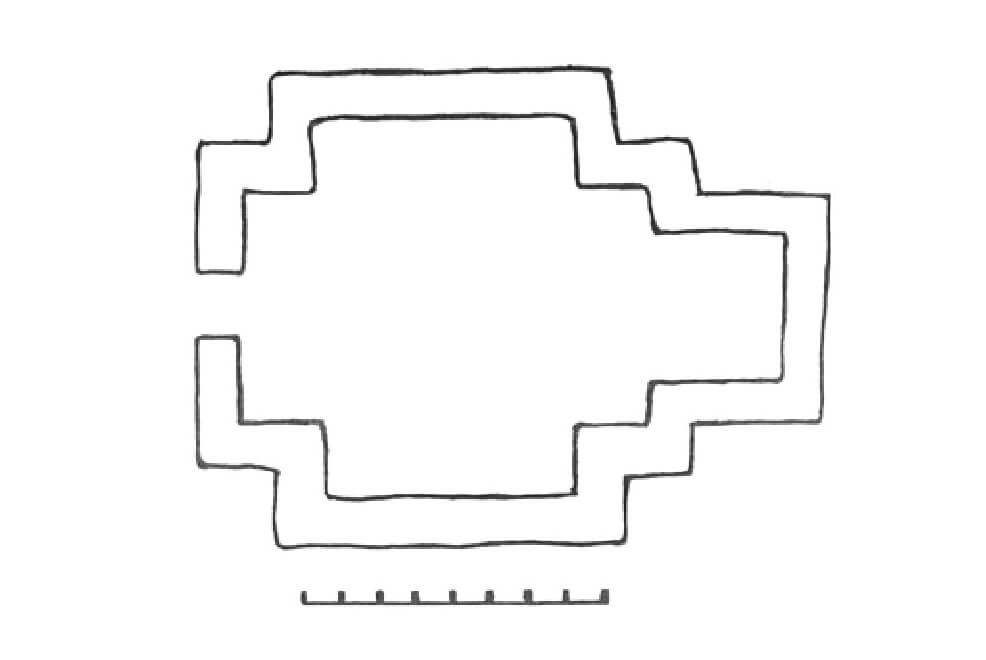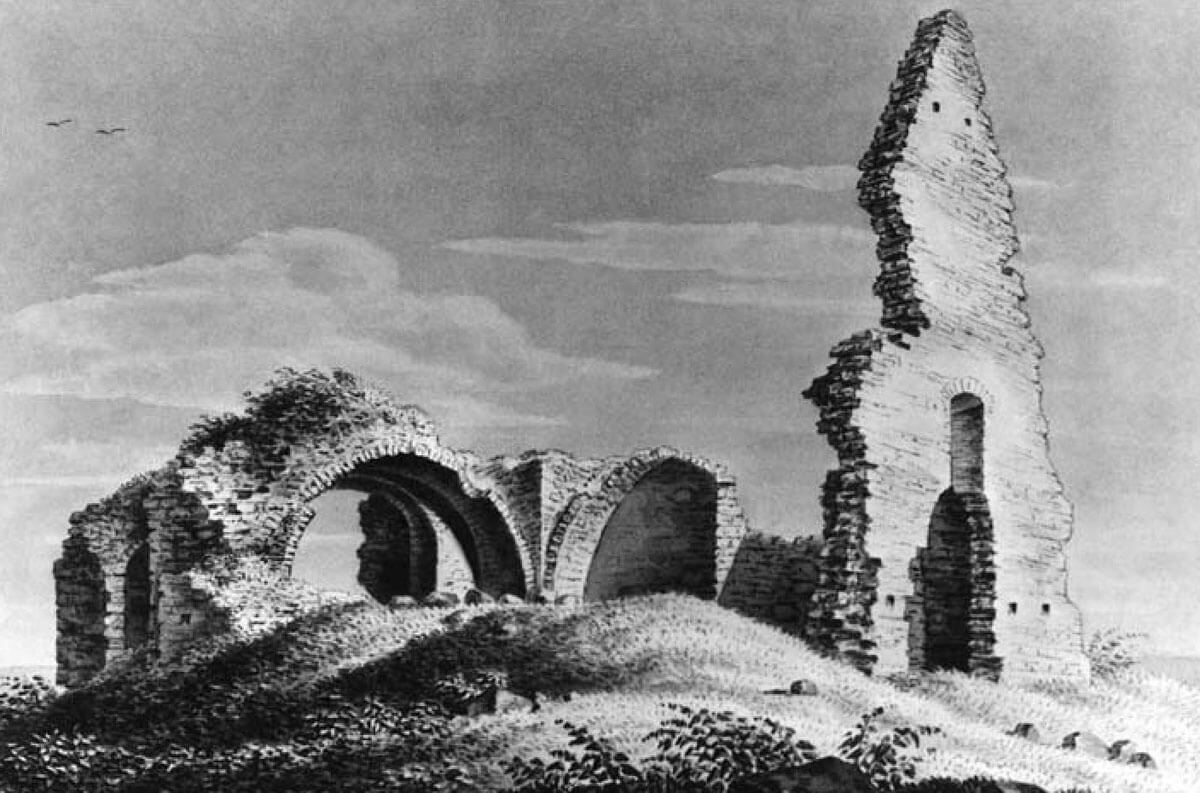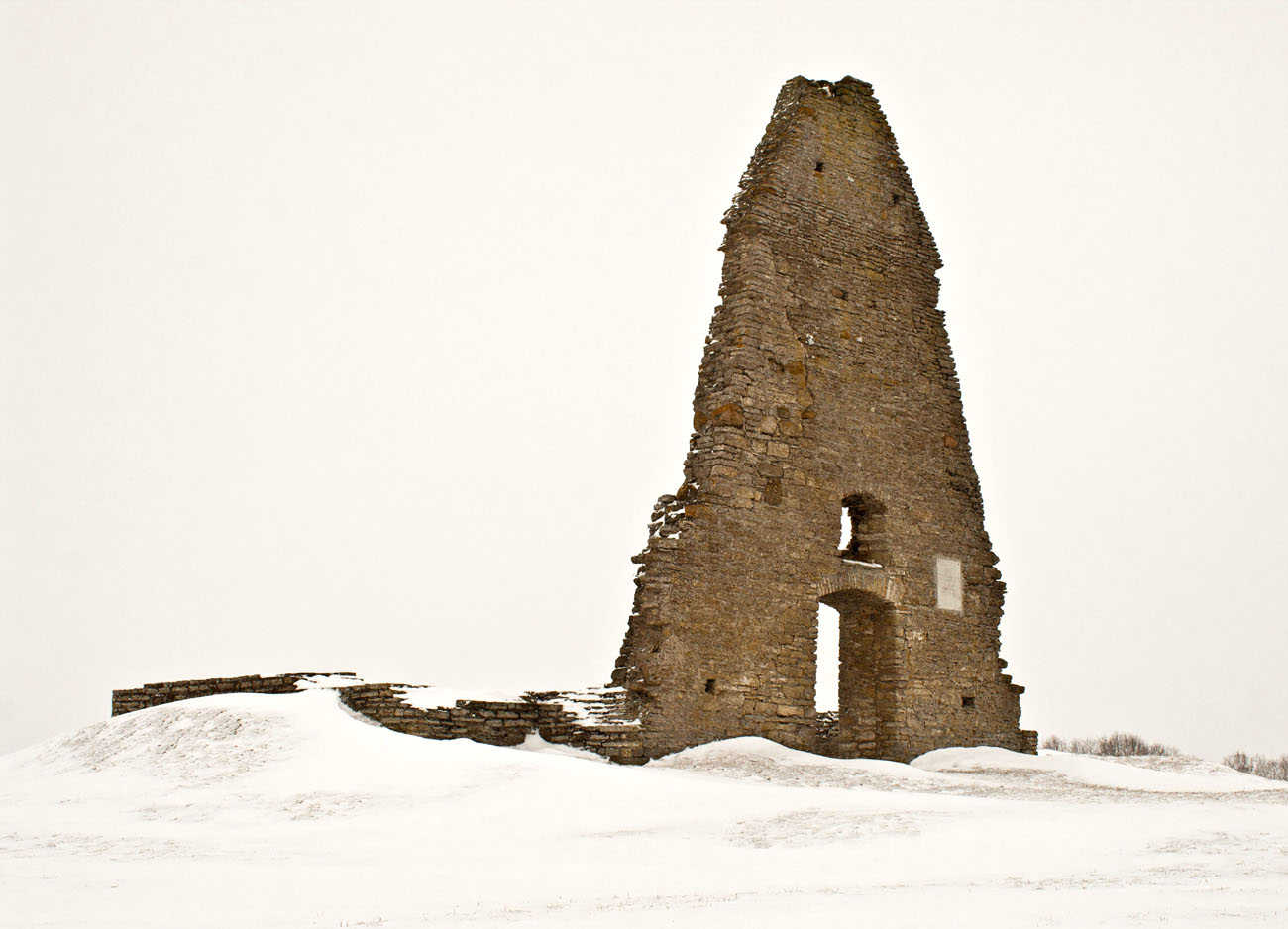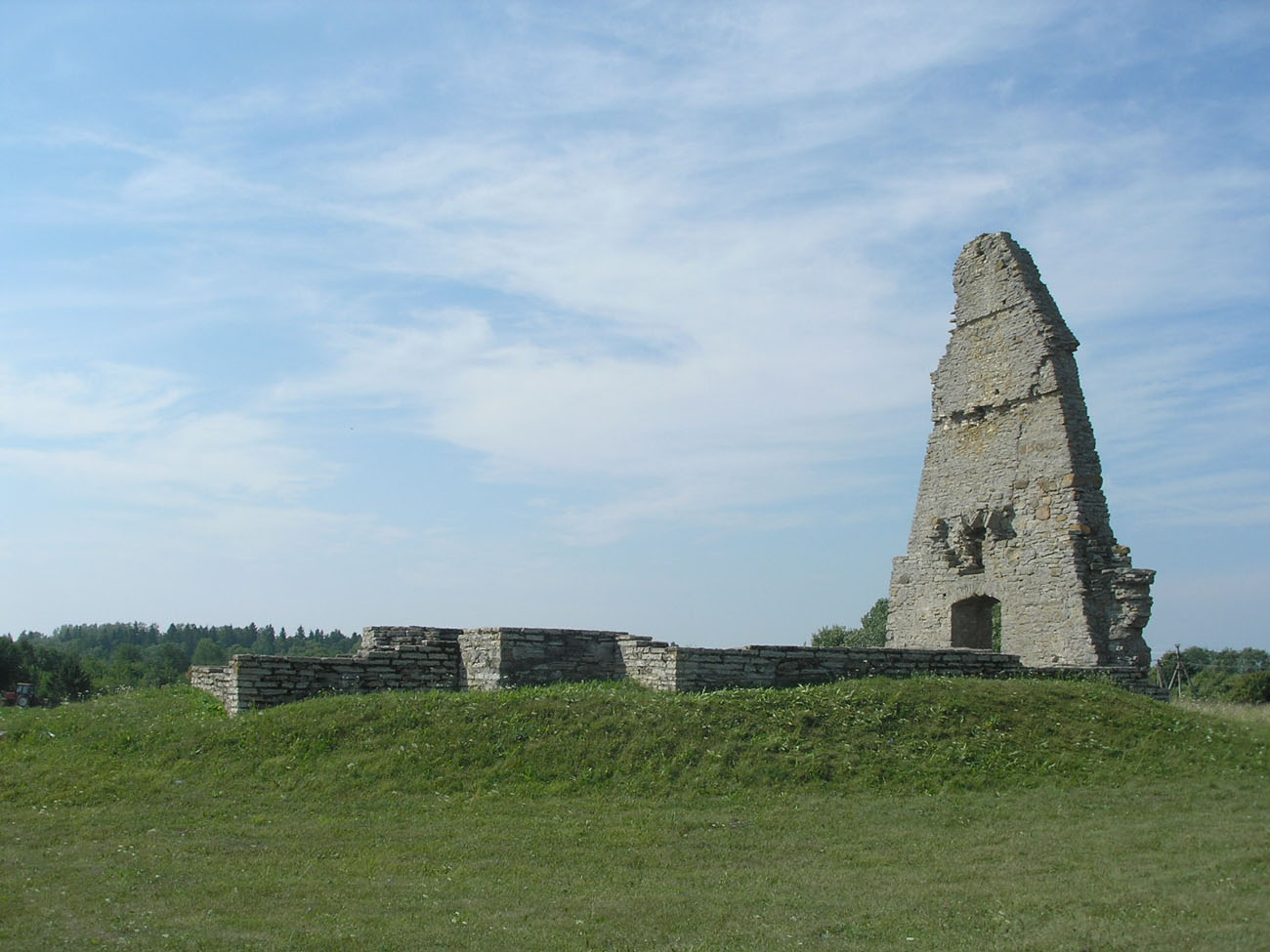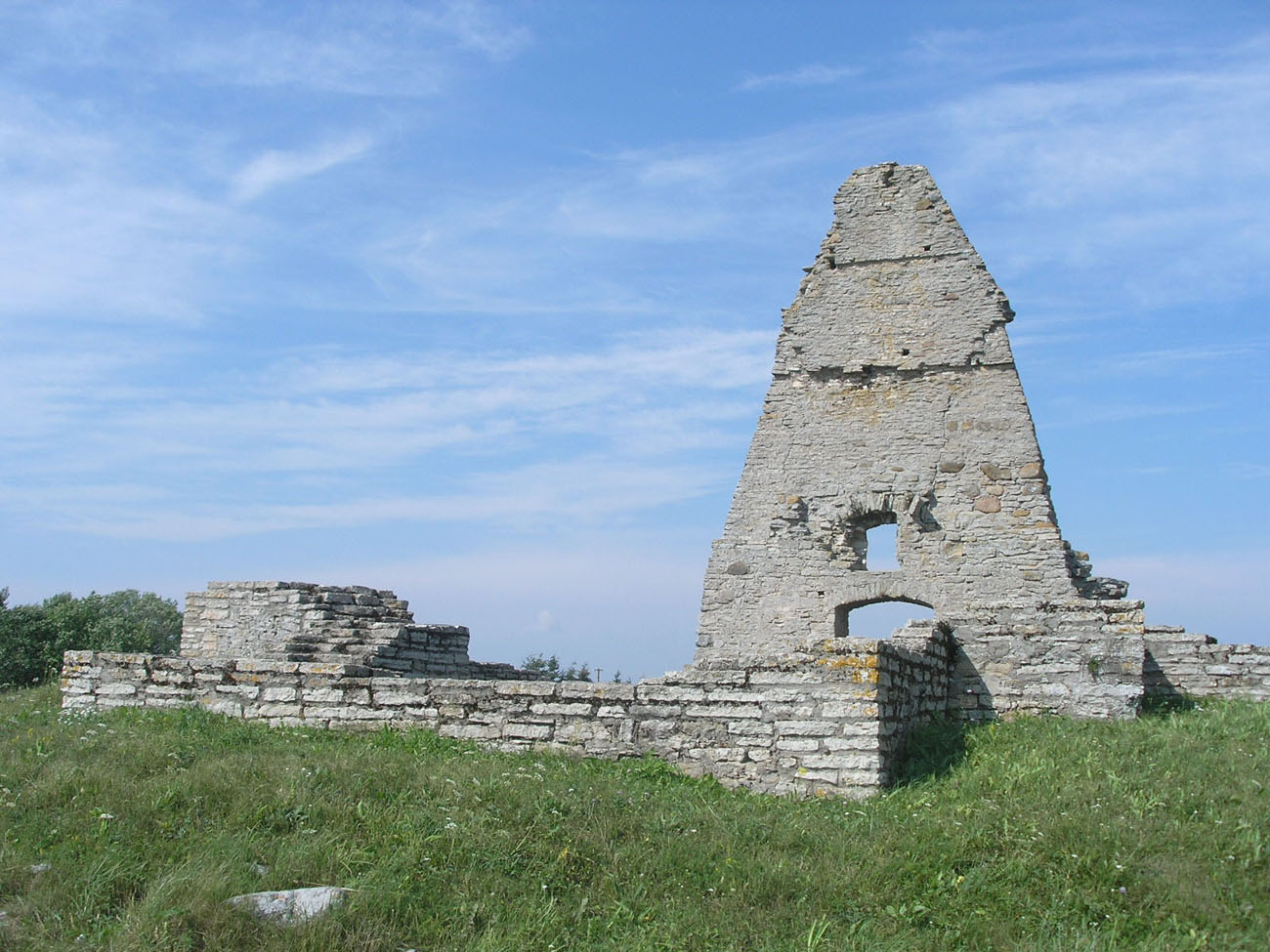History
The chapel of the Blessed Virgin Mary was built in the first decades of the 13th century, as one of the first stone buildings in the northern part of Livonia. It was probably founded by Ruthenian merchants who found a temporary stop for their boats in the nearby port of Mahu or Kaupsaare. They built a small sacral building near the village of Koila (originally Kokæl, Cokgele), which in terms of construction resembled several sanctuaries located in the lands of Ryazan and Smolensk, and especially the Ruthenian church of St. Paraskeva, created by Smolensk builders on the Novgorod market square in 1207 (St. Paraskeva was the patroness of trade, especially markets and fairs).
Thanks to favorable location on the trade route, both the port of Mahu and the village of Koila were of considerable importance even at the end of the 13th century, although by the 14th or early 15th century the chapel was in ruin. This was probably due to the deterioration of political relations between the Teutonic Knights and Ruthenia and the increasingly worse attitude towards the Orthodox Ruthenians – schismatics. It was not until the Rus – Teutonic War of 1501-1503, that it was rebuilt on the initiative of the Tallinn Commandery of the Livonian Order, this time to celebrate the victory in the Battle of Smolin in 1502. It was probably then that it was given a new, St. Mary invocation of the patroness of the Order. In 1534, it was first recorded in documents (“unser lieben Frauen Kapelle zu Maholm”). At that time, it was under the direct care of the Tallinn commander Anders Interbach, who also served as vicar of the Viru Nigula church.
In the early modern period, the chapel fell into decline as a result of the Reformation, as did most of the small rural religious buildings in Livonia. It was, however, venerated by Russian pilgrims and the local rural population. It was first described as ruined by Adam Olearius, a traveller who was a member of a trading expedition from Schleswig, who suffered such a serious sea accident in the late autumn of 1635 that he and his companions had to rest for several weeks in a manor near Viru Nigula. He wrote that the chapel was collapsed, but was visited on the May Day by non-Germans, who made offerings of food and wax figurines, lit candles, crawled on their knees around the building and prayed for recovery. Merchants were also supposed to gather at the chapel at that time, which was supposed to lead to many depravities and pagan vices. A document from 1647 indicated that the chapel in Viru Nigula was one of four in the country, at the ruins of which all kinds of superstitions were most often propagated. In 1645, a complaint was filed about the “monstrous idolatry” prevailing at the chapel and about some lords from the nearby manor who sold beer in the local taverns and had it transported to the chapel. From the perspective of the rulers, the situation was so bad that the governor of Estonia, Count Erik Oxenstierna, sent a military unit to Viru Nigula in the middle of summer 1649 to expel the people from the chapel and, if necessary, impose corporal punishment to some. Michael Scholbach, who worked as a pastor at Viru Nigula from 1657 to 1673, noticed that pagan practices began to be carried out at night in order to hide them.
During a visitation to the church at Viru Nigula in 1715, complaints were still made about the superstitious rituals taking place at the chapel. One of the local peasants even openly defended the delusions. It was not until around the middle of the 18th century that the importance of the chapel for the local population diminished. In 1815, pastor Gustav Hasselblatt stated that there was no one among the peasants who could tell him anything interesting about the ruins. Soon afterwards, a more scientific approach to the relics of the building began, with the first attempts to explain its origins, which began the tradition of identifying its foundation with the victory of the Livonian Order over the Ruthenians. Thanks to this, in 1897, on the initiative of Baron Alexander Boris Stael von Holstein, the first renovation works on the chapel were undertaken.
Architecture
The chapel was built on a small hill at the southern border of the village of Koila. It was built on the plan of a Greek cross, which was an unusual solution in the northern areas of Livonia in the Middle Ages and must have referred to the Orthodox, Ruthenian architectural style. The building consisted of a nave, two shallow arms of the transept on the north and south sides, and a small, quadrangular chancel on the eastern side.
The chapel differed from the Ruthenian prototypes primarily in the lack of a vestibule on the western side, although it could have been removed during a thorough reconstruction at the beginning of the 16th century. Another difference was the straight closure of the chancel on the eastern side instead of a semicircular apse, as well as the lack of corner pilasters, comparable to those used in the church of the Archangel Michael in Smolensk or the church of St. Paraskeva in Novgorod. The latter was probably due to the much smaller size of the chapel or the limestone used in Viru Nigula, which was less convenient for precise shaping than bricks.
The chapel’s windows were probably originally narrow and quite high, perhaps semicircularly headed like in the Novgorod church of St. Paraskeva. The western facade of the chapel had segmental arches, but this could have been the result of reconstruction from the early 16th century. The entrance to the chapel was from the west. The interior was covered with a vault. The nave was separated from the arms of the transept and the chancel by arcades, perhaps with slightly pointed arches.
Current state
The relics of the chapel are today a special monument of Estonian architecture, the oldest stone and unique example of the spread of Ruthenian construction art to the Baltic countries. Unfortunately, only the western gable wall of the chapel has survived to this day, renewed during renovation works, with significant fillings of the gaps on the north side. The remaining fragments of the building are visible only at the ground level. Entry to the area of the monument is free. It is located in the field, east of the village.
bibliography:
Hein A., Viru-Nigula Maarja kabelist nii- ja naapidi, “Kunstiteaduslikke Uurimusi”, 22/2013.

